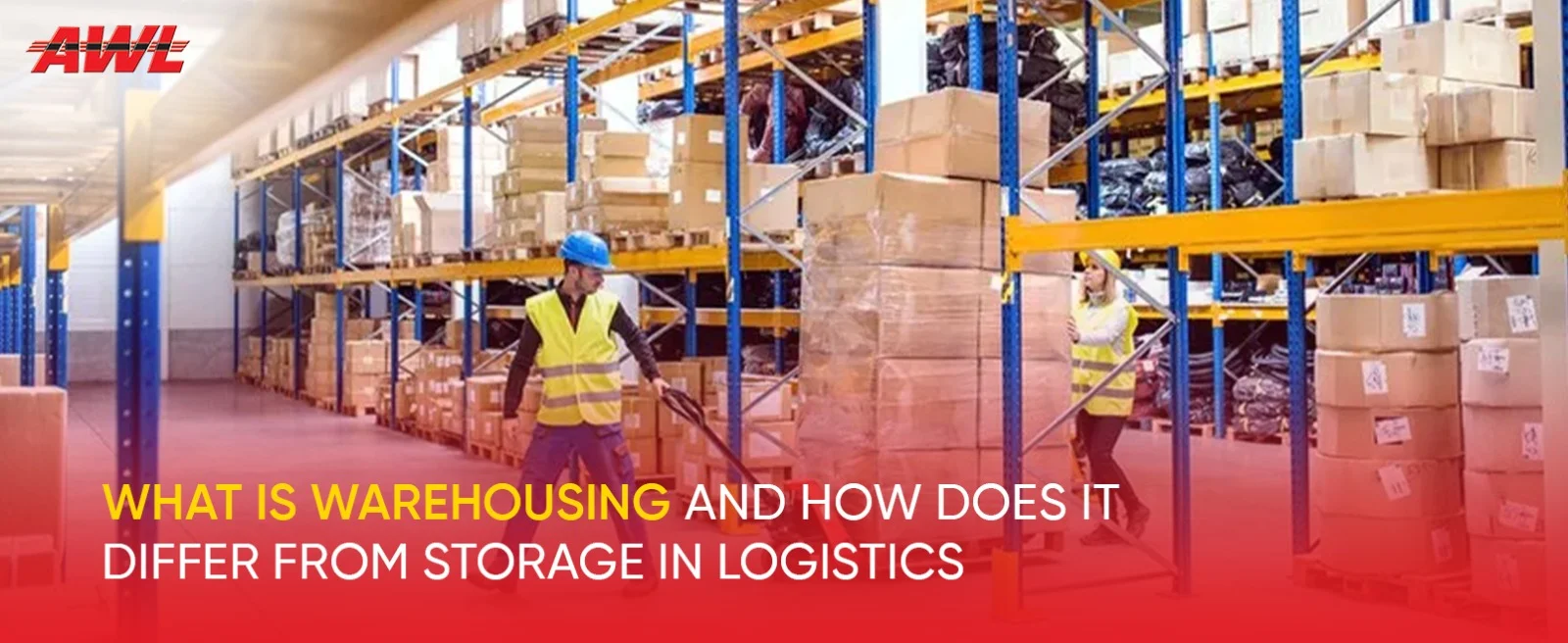
In today’s fast-paced business world, logistics plays a key role in ensuring that goods reach customers on time and in perfect condition. Among the many processes involved, warehousing and storage are often confused. While both deal with keeping goods safe, they serve very different purposes in the supply chain. To understand this better, let’s look at what warehousing really means, how it differs from storage, and how a warehouse management system helps businesses grow efficiently.
What Is Warehousing?
Warehousing refers to the process of storing goods in a planned and organized way until they are needed for sale, distribution, or manufacturing. It is not just about keeping products safe but also about managing the flow of goods in and out of the facility. A warehouse acts as a central hub where goods are received, sorted, tracked, and then shipped to their next destination.
Modern warehouses are much more than large storage spaces. They are technology-driven centers equipped with systems that help manage inventory, orders, and shipments efficiently. This is where a warehouse management system comes into play. It helps businesses monitor every movement of goods in real-time, from receiving to dispatch.
Companies like AWL India use advanced warehouse services to make the entire logistics process smooth and cost-effective. By combining automation, skilled manpower, and digital tracking tools, businesses can meet customer demands faster and with fewer errors.
Understanding Storage
Storage, on the other hand, is simply keeping goods in a safe place until they are required. It focuses mainly on protecting products from damage or loss. Storage can happen anywhere, such as a small storeroom, a cold storage unit, or even a rented space. It does not involve the complex tracking or movement of goods that a warehouse handles.
In storage, the goal is to preserve the product’s quality. For example, food products are kept in cold storage to maintain freshness, while raw materials might be stored until the next production cycle. However, there is usually no continuous monitoring or process optimization involved as there is in a warehouse setting.
The Key Differences Between Warehousing and Storage
Though the two terms are often used interchangeably, warehousing and storage have several key differences:
1. Purpose
The main purpose of warehousing is to manage the flow of goods. It involves receiving, sorting, labeling, packaging, and shipping. Storage is mainly about keeping items safe for future use.
2. Technology Involvement
A warehouse management system is a vital part of warehousing. It automates inventory tracking, order processing, and data management. In contrast, storage rarely involves any such technology.
3. Operations
Warehousing includes operational processes like cross docking, where products are directly transferred from incoming to outgoing trucks without long-term storage. Storage does not include such activities; it simply involves keeping goods stationary.
4. Duration
Storage usually serves long-term needs, while warehousing can handle both short-term and quick turnaround requirements based on supply chain demands.
5. Value Addition
Warehousing adds value by optimizing supply chain operations, reducing delivery times, and ensuring product accuracy. Storage, meanwhile, is passive and does not contribute to logistics efficiency.
The Role of a Warehouse Management System in Modern Logistics
A warehouse management system (WMS) is the backbone of efficient logistics operations. It helps businesses manage inventory, track shipments, and streamline the order fulfillment process. A good WMS provides real-time visibility into stock levels, helping avoid shortages or overstocking.
For companies like AWL India, which is often seen as the best warehouse company in India, the use of advanced WMS solutions ensures that every operation is precise and well-coordinated. These systems can automatically update data, guide warehouse staff, and even integrate with transportation systems for faster deliveries.
With a warehouse management system, businesses can improve accuracy, reduce manual work, and cut down costs. It also enhances customer satisfaction because products are delivered faster and without errors.
Warehousing in Delhi NCR – The Logistics Hub
The Delhi NCR region has become one of the biggest logistics and warehousing hubs in India. With its excellent connectivity through roads, railways, and air routes, it is an ideal location for companies to set up a warehouse in Delhi NCR.
Businesses operating here benefit from easy access to major markets and ports, which helps reduce transportation time and costs. AWL India offers state-of-the-art warehouse services in this region, combining smart infrastructure with a robust warehouse management system to ensure timely and accurate deliveries.
From cross docking & warehouse services to automated inventory tracking, companies in Delhi NCR can access complete logistics support to streamline their supply chain.
Why Choose AWL India for Warehousing Solutions
AWL India is recognized as one of the best warehouse companies in India, known for its advanced technology, efficient processes, and customer-first approach. The company offers complete warehousing and logistics solutions, including temperature-controlled storage, e-commerce fulfillment, and transportation management.
With the help of a powerful warehouse management system, AWL India ensures that every product is tracked, handled, and delivered with precision. Their cross docking & warehouse services are designed to optimize supply chain efficiency and reduce lead time for businesses.
Moreover, having a well-located warehouse in Delhi NCR allows AWL India to serve multiple cities and states quickly. Whether it’s B2B or B2C logistics, the company’s focus on innovation and quality makes it a trusted partner for many leading brands.
Conclusion
To sum it up, warehousing and storage may seem similar, but they serve different roles in logistics. Warehousing is a dynamic process that involves managing, tracking, and moving goods efficiently, while storage is a static method focused on safekeeping.
The power of a warehouse management system lies in how it transforms logistics operations—making them faster, smarter, and more reliable. Companies that invest in modern warehousing technologies and partner with the best warehouse company in India like AWL India gain a strong competitive edge.
Whether you are looking for cross docking & warehouse services or planning to set up a warehouse in Delhi NCR, choosing a provider that combines technology with expertise can make all the difference. Warehousing is not just about storing goods—it’s about moving businesses forward.

Michael S.
Head of Digital Marketing
